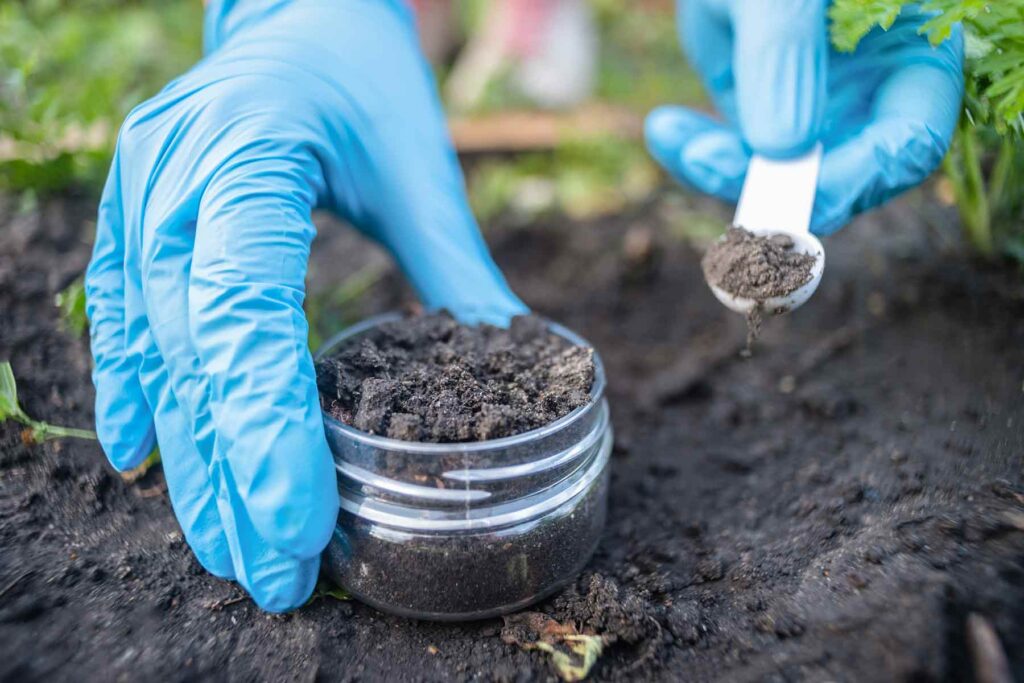Soil pH is a crucial factor in determining the health and productivity of your garden or agricultural land. It influences the availability of nutrients to plants and the activity of soil microorganisms. Testing soil pH can help you make informed decisions about soil amendments and plant selection. Here’s a step-by-step guide on how to test soil pH accurately and efficiently.
Why Test Soil pH?
Understanding your soil’s pH level helps you:
Select suitable plants: Some plants thrive in acidic soils, while others prefer alkaline conditions.
Optimize nutrient availability: Soil pH affects the availability of essential nutrients to plants.
Improve soil health: Adjusting soil pH can enhance microbial activity and overall soil structure.
Methods for Testing Soil pH
Using a pH Meter
Using pH Test Strips
Using a Soil Test Kit
Laboratory Testing
Using a pH Meter
A pH meter provides a quick and accurate reading of soil pH.
Materials Needed:
pH meter
Distilled water
Clean container
Towel or paper towel
Steps:
Collect Soil Sample: Dig 4-6 inches deep and collect soil from different areas of your garden to get a representative sample.
Prepare the Sample: Remove debris and stones, and mix the soil thoroughly.
Create a Soil Slurry: Add distilled water to the soil sample in a 1:1 ratio (e.g., 1 cup of soil to 1 cup of water). Stir the mixture well and let it sit for 15-30 minutes.
Calibrate the pH Meter: Follow the manufacturer’s instructions to calibrate your pH meter using standard buffer solutions.
Test the Soil: Insert the pH meter into the soil slurry, ensuring the electrode is fully submerged. Wait for the reading to stabilize and record the pH value.
Clean the Meter: Rinse the electrode with distilled water and dry it with a towel.
Using pH Test Strips
pH test strips are an affordable and straightforward method to test soil pH.
Materials Needed:
pH test strips
Distilled water
Clean container
Steps:
Collect Soil Sample: As described in the pH meter method.
Prepare the Sample: Remove debris and mix the soil.
Create a Soil Slurry: Add distilled water to the soil sample in a 1:1 ratio and mix thoroughly. Let it sit for 15-30 minutes.
Test the Soil: Dip a pH test strip into the soil slurry. Remove it and wait for the color to develop.
Compare the Color: Match the color of the test strip to the provided pH color chart to determine the pH level.
Using a Soil Test Kit
Soil test kits are available at garden centers and provide a more comprehensive analysis.
Materials Needed:
Soil test kit
Distilled water
Clean container
Steps:
Collect Soil Sample: Follow the same procedure as above.
Prepare the Sample: Remove debris and mix the soil.
Create a Soil Slurry: Add distilled water to the soil sample and mix.
Test the Soil: Follow the instructions provided with the soil test kit. Typically, you will add a chemical reagent to the soil slurry and observe a color change.
Compare the Color: Use the kit’s color chart to determine the soil pH.
Laboratory Testing
For the most accurate and detailed analysis, consider sending your soil sample to a professional laboratory.
Steps:
Collect Soil Sample: As previously described.
Prepare the Sample: Remove debris and mix the soil.
Package the Sample: Follow the laboratory’s guidelines for packaging and sending your soil sample.
Receive Results: The lab will analyze your soil and provide a detailed report on pH and other soil characteristics.
Interpreting Results and Adjusting Soil pH
Acidic Soil (pH < 6.5): Add lime (calcium carbonate) to raise the pH. Alkaline Soil (pH > 7.5): Add sulfur or aluminum sulfate to lower the pH.
Regularly testing your soil pH can significantly improve your gardening or farming outcomes. By understanding and adjusting soil pH, you ensure that plants receive the nutrients they need, fostering healthier growth and higher yields. Whether using a pH meter, test strips, a soil test kit, or laboratory services, testing soil pH is an essential practice for any serious gardener or farmer.
Additional Tips for Effective Soil pH Testing
Frequency of Testing: Test your soil pH at least once a year, preferably in early spring or late fall. More frequent testing may be necessary if you are making significant soil amendments.
Sampling Depth: For lawns, sample the top 2-4 inches of soil. For gardens and flower beds, sample the top 6-8 inches. In tree and shrub areas, sample the top 12 inches.
Multiple Samples: Take multiple soil samples from different locations within the testing area to get an average pH reading. Soil pH can vary significantly within a small area.
Avoid Contamination: Use clean tools and containers to collect and mix soil samples. Avoid touching the soil with your hands to prevent contamination.
Record Keeping: Keep a record of your soil pH test results and any amendments you make. This helps track changes over time and informs future decisions.
Common Soil pH Problems and Solutions
High Soil Acidity (Low pH):
Symptoms: Poor plant growth, yellowing leaves, stunted roots.
Solutions: Apply lime (calcitic or dolomitic) to raise soil pH. The amount of lime needed depends on the current pH and soil type. Follow the recommendations from your soil test results.
High Soil Alkalinity (High pH):
Symptoms: Chlorosis (yellowing leaves with green veins), poor nutrient uptake, slow growth.
Solutions: Add sulfur or aluminum sulfate to lower soil pH. Organic matter like peat moss can also help acidify soil over time.
Nutrient Imbalances:
Symptoms: Poor plant performance despite adequate fertilization.
Solutions: Adjust soil pH to the optimal range for nutrient availability (typically 6.0-7.0 for most plants). Amend soil with organic matter to improve overall soil health and nutrient balance.
Special Considerations for Different Plants
Acid-Loving Plants: Blueberries, azaleas, rhododendrons, and camellias thrive in acidic soils (pH 4.5-6.0).
Neutral pH Plants: Most vegetables, fruits, and ornamental plants prefer a pH range of 6.0-7.0.
Alkaline-Tolerant Plants: Some herbs (like lavender and rosemary) and certain trees (like cedars and pines) can tolerate higher pH levels (7.0-8.0).
Testing and adjusting soil pH is a vital practice for maintaining healthy, productive gardens and landscapes. By regularly monitoring soil pH and making necessary adjustments, you can create an optimal growing environment for a wide variety of plants. Whether you choose to use a pH meter, test strips, a soil test kit, or professional laboratory services, understanding your soil’s pH will empower you to make informed decisions that enhance plant health and yield.
Taking the time to test and amend your soil pH is an investment that pays off with healthier plants, more robust growth, and better harvests.






